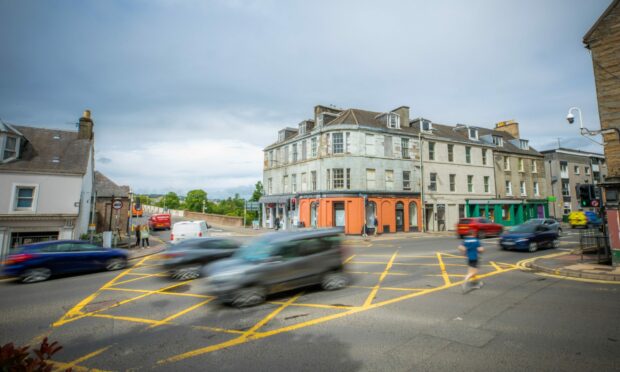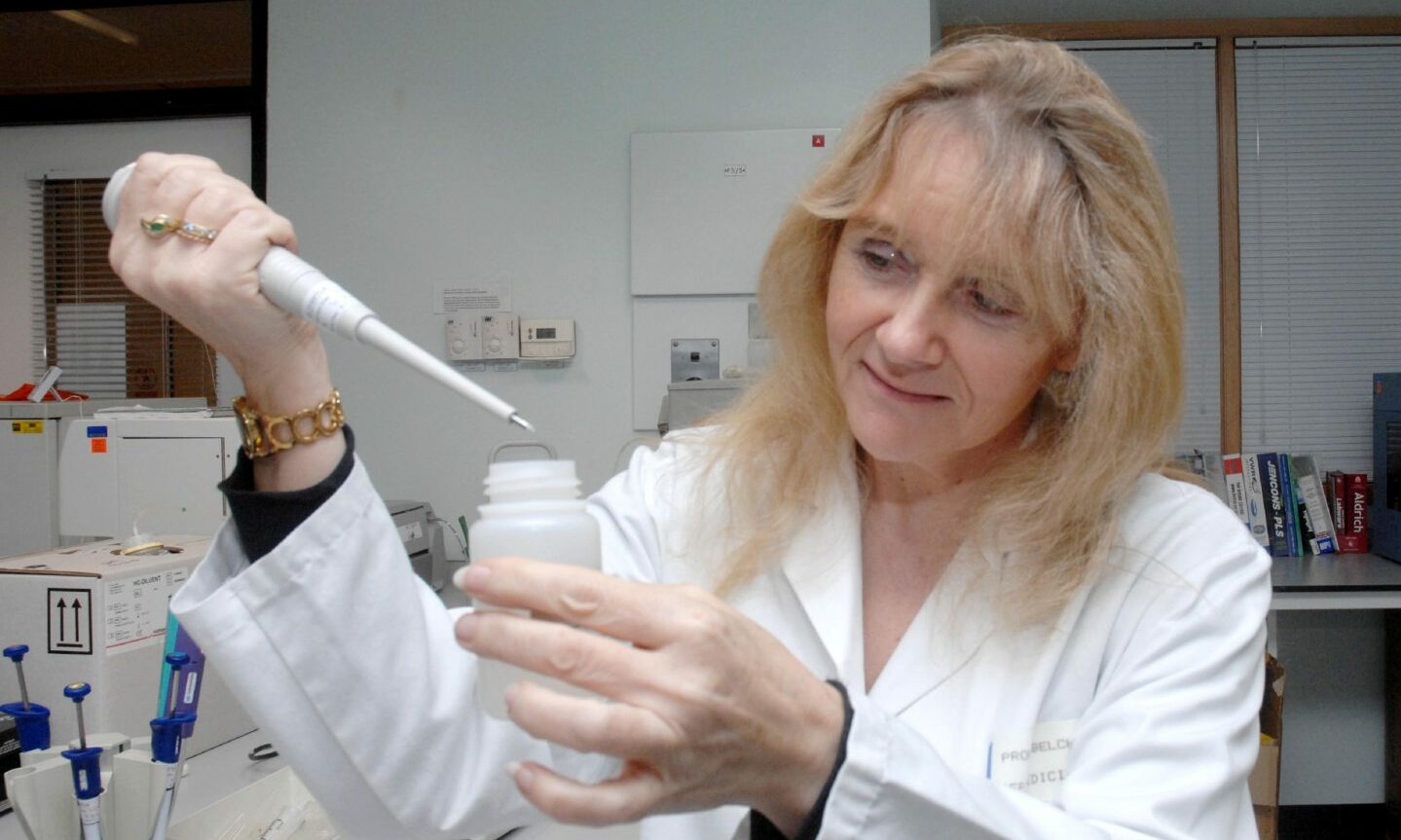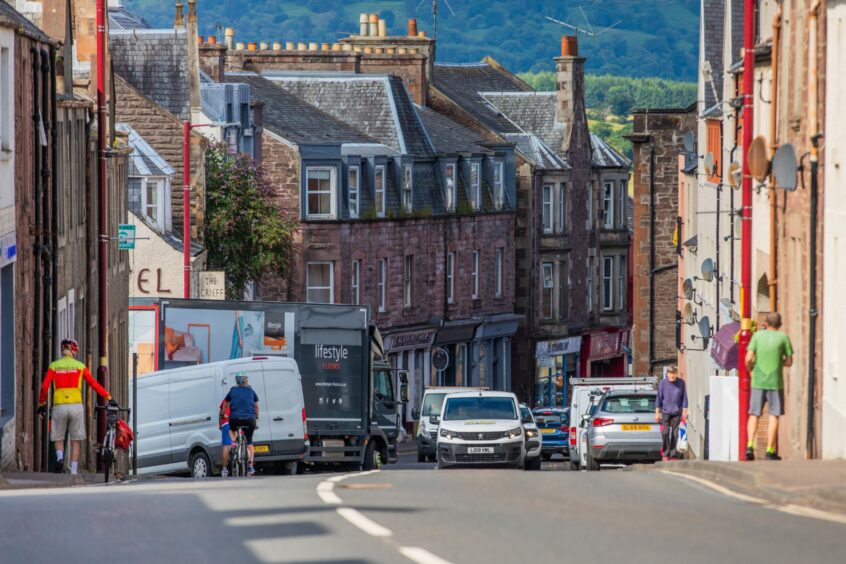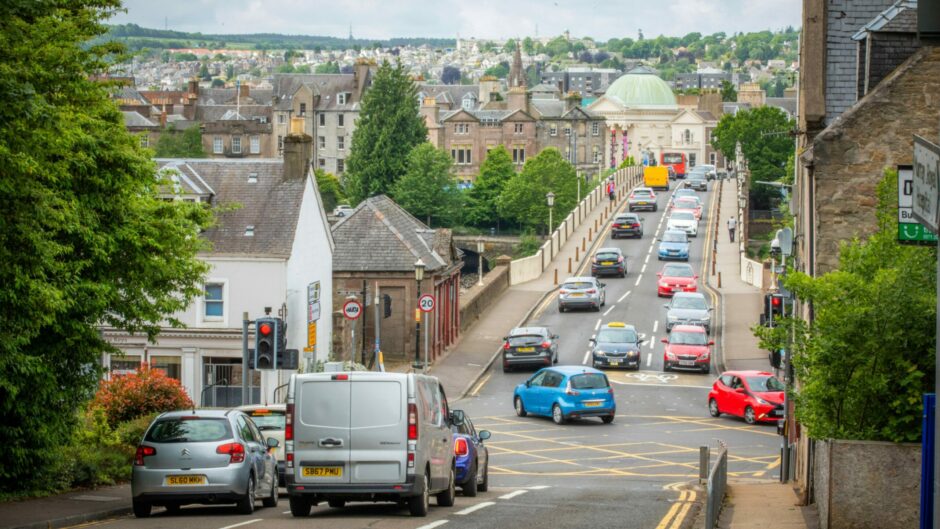Perth and Kinross Council is trialling lamppost-mounted air quality monitors at two of the region’s pollution hotspots.
The local authority is spending £24,750 on hiring two sensors for a year-long trial.
It will be installing the gadgets in Perth’s Bridgend area and Crieff.
These areas are described as “hotspots” for air pollution.
Crieff is pollution ‘canyon’
Professor Jill Belch is an expert in vascular medicine – the treatment of circulatory diseases – at Dundee University.
She has described air pollution as a “silent killer”.
Crieff suffers from the “canyon effect” says Prof Belch.
“This is where because you have high buildings, the wind doesn’t clear the pollution.
“And it is a through road from Comrie and beyond to Perth. You have shops and people parking, and idling, there.”
However, she does not think this explains the pollution in congested Bridgend.
“People prefer to say there is a canyon effect at Bridgend. But actually, down at Isla Road there’s no canyon effect.
“The pollution is real there.”
Small sensors are easier to locate
Installing air quality monitors can be a challenge.
This is because of factors such as pavement width, power supply and land ownership.
“It is not always possible to place these in the best position for measuring air quality in pollutant hotspots,” said a Perth and Kinross Council spokesperson.
“We are therefore proposing to use these smaller air quality sensors, which can be attached to lampposts, to measure pollutants in hotspots in Bridgend in Perth and in Crieff.”
Glasgow-based environmental consultants Sweco UK will be supplying the monitors.
They will be responsible for capturing the data and reporting the findings back to the council.
Perth and Kinross Council (PKC) will use the data to ensure its real time pollution monitors are in the in the “best positions”.
“Air quality in Perth and Kinross is generally very good,” added the spokesperson.
“PKC has real time monitors sites in several locations to measure air quality.
“One simple way for people to help improve air quality is to leave their car at home for short journeys.
“And not to leave their engine idling while stopped as road transport is responsible for a significant amount of air pollution.”













